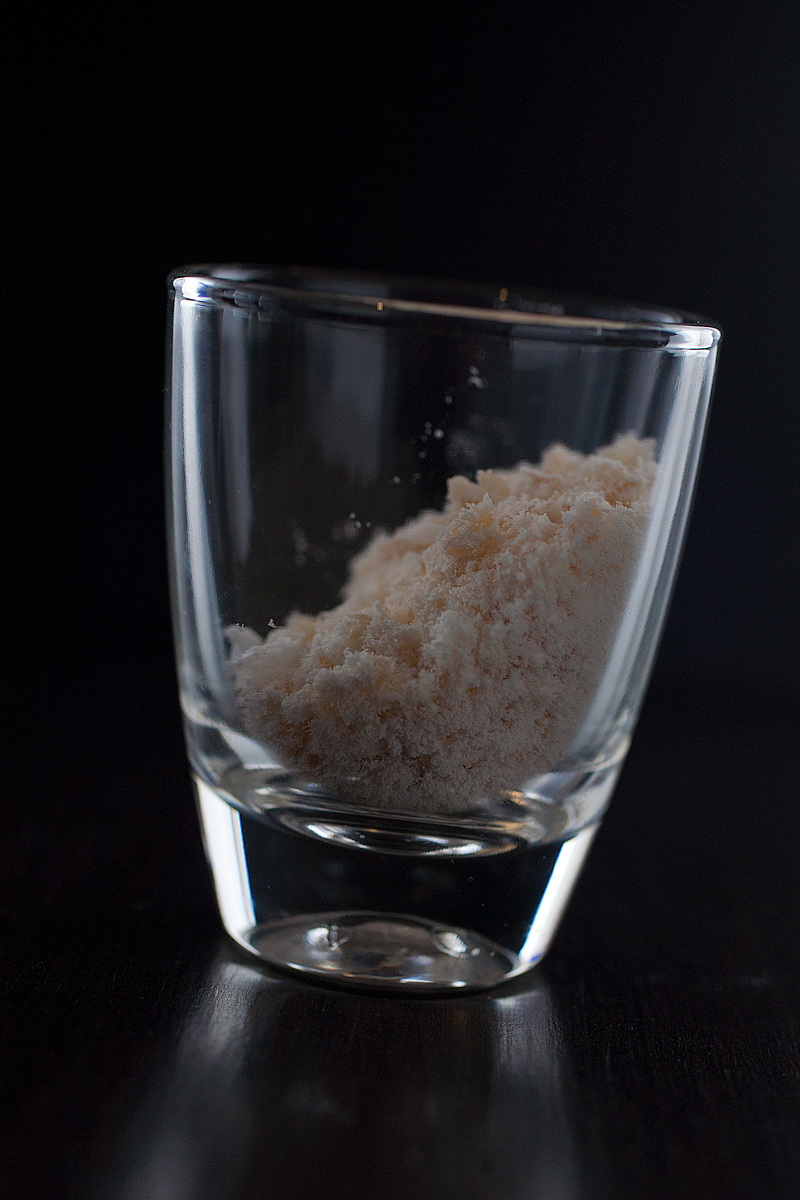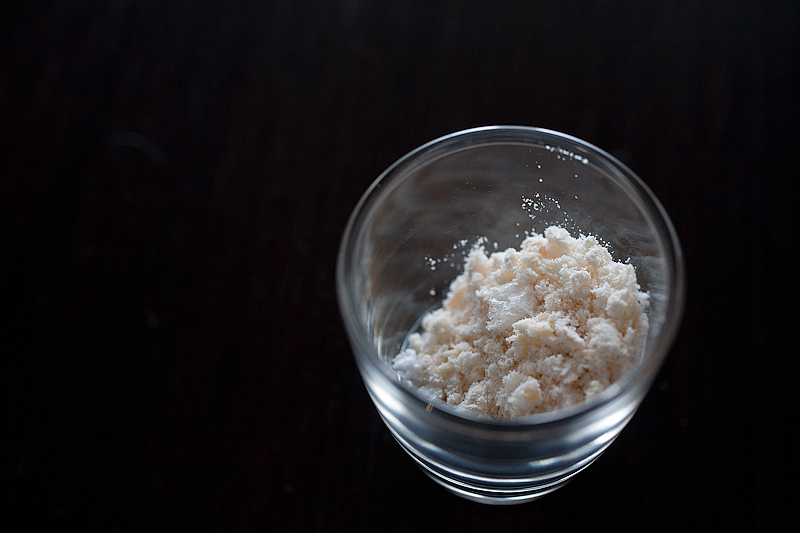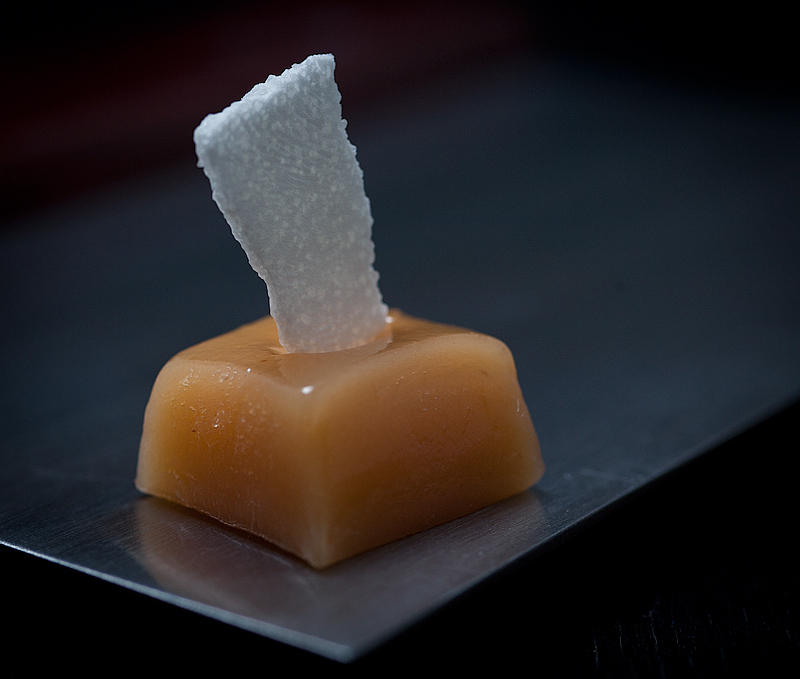The first recipe out of the gate for this project is “Dry Caramel, Salt”. I picked this one because it seemed easy.
It wasn’t.
It took me 3 tries to make the caramel properly. The book is interesting in its minimalism; it instructs me to bring the ingredients for the caramel up to temperature, but says nothing about how long that should take, what I should be looking for during this process, etc. Normally I might find this frustrating enough to call a cookbook worthless, but in this case I took the opportunity to learn a bit more about what was happening at a chemical level (it’s highly probable that my patience was tempered by the fact that I’d invested more money than I’d like to admit in the ingredients).
The caramel base, once properly made, was blended with maltodextrin, a carbohydrate obtained from cornstarch molecules (in this case those of tapioca). Maltodextrin has a few interesting properties; for one, it’s extremely light. A pound of maltodextrin arrived in a bag the size of a couch cushion, and pouring it into a storage container caused a huge mess as the stuff was quite ‘floaty’. It also becomes statically-charged very easily. The main source of interest for this recipe, though is its tendency to bond with fat (in this case, butter in the caramel). Processing the two together yields a very light dust or powder that I could really only describe as being like dry snowflakes.

“Chef recommends you enjoy this dish in one mouthful”. Pouring a shot of the dry caramel seasoned with a few flakes of sea salt into one’s mouth feels at first a bit disturbing; it’s dry and slightly floury, but it immediately melts with the warmth of the mouth into a soft, rich caramel flavor with spikes of salt. It’s unusual and fun as the taster realizes what it is.

The recipe yielded quite a bit more caramel than was needed for the powder, so I took the opportunity to tick off another goal with this project: to try to apply some concepts that I’m learning to make stuff of my own. In this case, I cut the caramel into small squares, and topped them with rocks of lime sugar.
